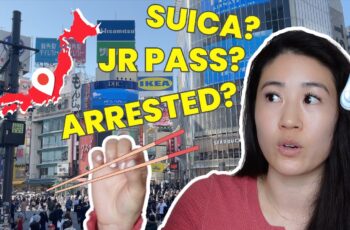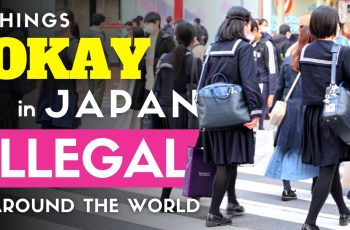This is not a list of spooky campfire tales. This is a true-crime investigation into the history and horror of Japan’s most haunted places. We will explore the documented events—the crimes, the suffering, the historical injustices—that gave birth to the legends. We will delve into why the lingering energy in these locations is not merely paranormal folklore, but the palpable echo of real human tragedy. These are the places you read about, the places you see in grainy online videos, and the places that we must warn you, in the strongest possible terms, to never visit. The real horror isn’t what you might see; it’s what you will learn.
1. Aokigahara Forest: The Sea of Trees and Sorrow
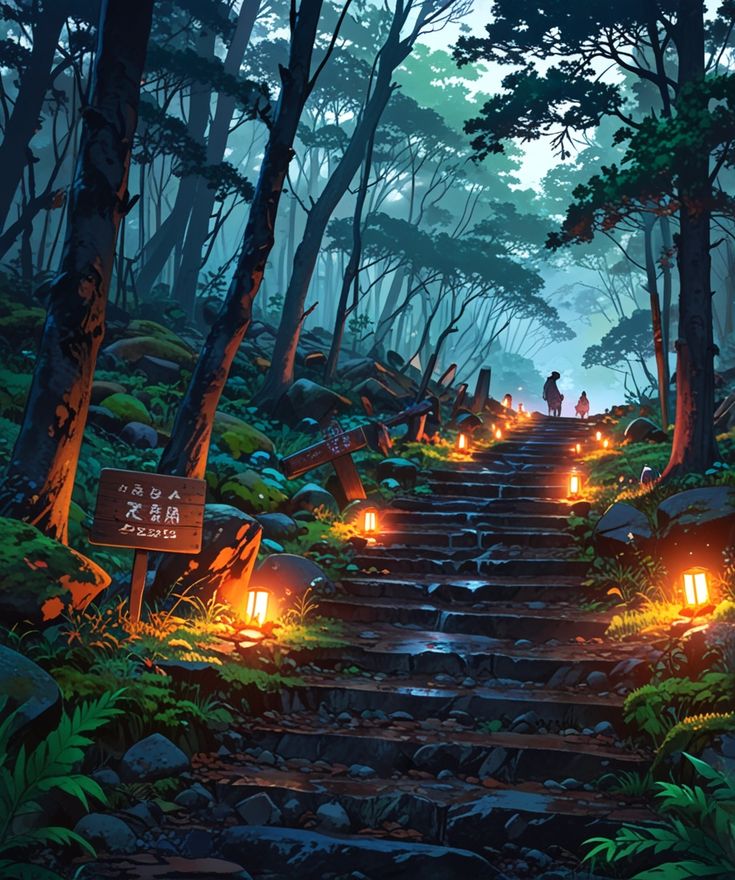
The Legend:
At the northwest base of Mount Fuji lies Aokigahara Jukai, the “Sea of Trees.” It is a forest so dense that from above, its canopy resembles a rolling green ocean. It is also known for an unnerving, profound silence, the porous lava rock absorbing all sound. Legend says that compasses spin wildly here, that GPS fails, and that it is impossible to escape once you stray from the path. It is said to be haunted by yūrei—the tormented ghosts of those who have died within its depths, whispering and luring others to join them. Many who enter for a thrill report an overwhelming feeling of sadness and of being watched from every direction.
The True Crime Documentary:
The true horror of Aokigahara is not a myth. It’s a stark, documented, and ongoing tragedy. While ancient folklore speaks of ubasute—the grim practice of leaving the elderly to die in remote places during times of famine—the forest’s modern reputation is tied to a very real and devastating statistic. It is one of the world’s most-used suicide sites.
The phenomenon was arguably popularized by Seichō Matsumoto’s 1961 novel, Kuroi Jukai (Black Sea of Trees), which ends with a heartbroken character walking into the forest to end their life. This work of fiction tragically bled into reality, cementing the forest’s association with suicide in the national consciousness. Since then, the numbers have been staggering. For decades, official counts listed dozens, sometimes over a hundred, confirmed deaths per year. These numbers are likely conservative, as many are never found.
The “crime” here isn’t a single act of violence, but a societal issue that manifests in this silent, sprawling woods. The evidence is not of ghosts, but of the final, desperate moments of human lives. Volunteers and police conduct regular, grim patrols, not to hunt for specters, but to find bodies and, hopefully, to intercept those in crisis. They leave signs along the main paths with messages like, “Your life is a precious gift from your parents,” and “Please think of your family.”
The evidence of this reality is everywhere for those who dare to look: weathered ropes hanging from branches, abandoned tents, faded photographs, and personal belongings left behind as final, heartbreaking artifacts. The reported paranormal activity—the whispers, the apparitions, the crushing sadness—can be seen not as supernatural occurrences, but as the psychological weight of a place saturated with human despair. The forest itself has become a memorial to quiet, individual tragedies.
The Warning: Why You Must Not Go
Visiting Aokigahara for “ghost hunting” or morbid curiosity is the ultimate act of disrespect. This is not a haunted house attraction; it is a place of active, contemporary grief. Imagine the family of a person who has died here, learning that tourists are visiting the site of their loved one’s final moments for a cheap thrill. Furthermore, there is a real psychological danger. To wander these paths is to risk stumbling upon a scene of profound trauma that you can never unsee. The true danger of Aokigahara is not the yūrei in the trees, but the very real and devastating human sorrow that permeates the air, a sorrow that has the power to follow you home. Leave it to the volunteers, the professionals, and the quiet dignity it deserves
2. Inunaki Village & Tunnel: The Anatomy of a Myth
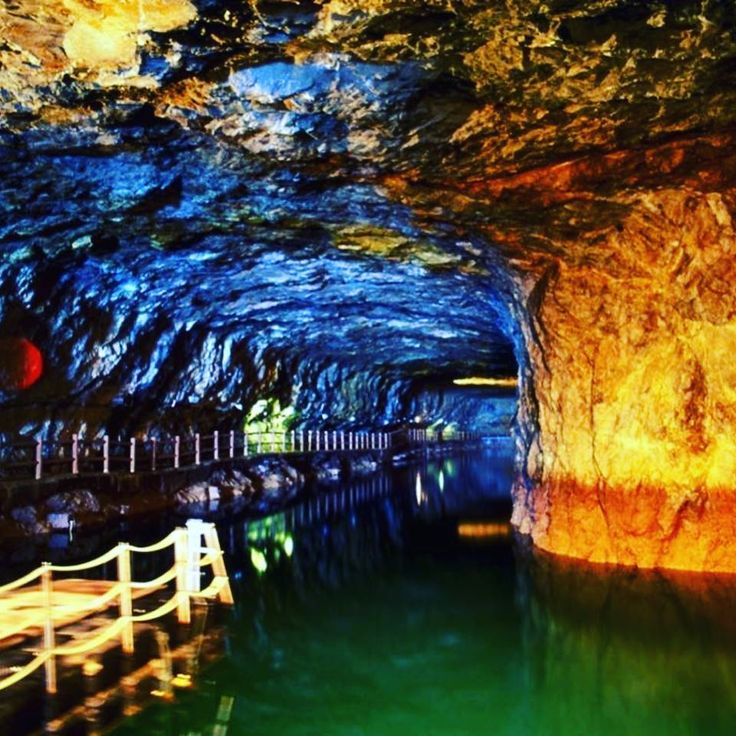
The Legend:
The story of Inunaki Village is one of Japan’s most terrifying and persistent urban legends. The tale goes that deep in the mountains of Fukuoka Prefecture, there exists a village completely cut off from the rest of Japan. A sign at its entrance reads, “The laws and constitution of Japan do not apply here.” The villagers are said to be hostile, inbred, and violent, practicing cannibalism and murdering any outsiders who dare to enter. The old Inunaki Tunnel is the supposed gateway to this horrifying place, and no one who passes through it ever returns.
The True Crime Documentary:
Investigating the Inunaki legend requires separating a terrifying myth from a brutal, factual crime. First, the “lost village” of Inunaki does not exist as the legend describes. There was a real Inunaki Village during the Edo period, but it was submerged and abandoned in 1970 with the construction of the Inunaki Dam. The residents were relocated, not left to descend into savagery. The famous sign has never been verifiably photographed and is likely a fictional embellishment that gave the legend its chilling legal hook.
So where did the intense fear and the story of murder come from? The answer lies not in the mythical village, but near the very real Old Inunaki Tunnel.
On December 7, 1988, a group of five youths abducted 20-year-old factory worker Koichi Uchiyama. They wanted to steal his car. When he resisted, they subjected him to a horrific and prolonged assault. Seeking a place to finish their crime, they drove to the area near the new, operational Inunaki Tunnel (the old one was already sealed and considered dangerous). There, they murdered Uchiyama, doused his body in gasoline, and set him on fire. The perpetrators were caught and sentenced in a case that shocked the nation.
This is the true crime at the heart of Inunaki. The brutal, senseless murder of Koichi Uchiyama occurred in the immediate vicinity of the infamous tunnel. Over time, the details of this real-life horror likely fused with the pre-existing folklore of the submerged village. The legend of a violent, lawless place became a vessel for the public’s memory of a real, unspeakably violent act. The fear surrounding the tunnel isn’t about a fictional village; it’s the lingering psychic stain of a documented murder.
The Warning: Why You Must Not Go
The Old Inunaki Tunnel is now permanently sealed with concrete blocks. Attempting to access it is not only trespassing but also extremely dangerous due to the risk of collapse. The area is remote and unmaintained. But the primary reason to stay away is rooted in the truth of the location. The legend, while frightening, is a fiction. The reality is the brutal murder of a young man. Visiting this place is to tread on the site of a horrific crime scene. The reported cries and shadowy figures in the tunnel are less likely to be village phantoms and more likely the “imprint” of the sheer terror and violence of that night in 1988. It’s a place of real-world evil, not supernatural fantasy.
3. Gunkanjima (Hashima Island): The Battleship of Ghosts and Forced Labor
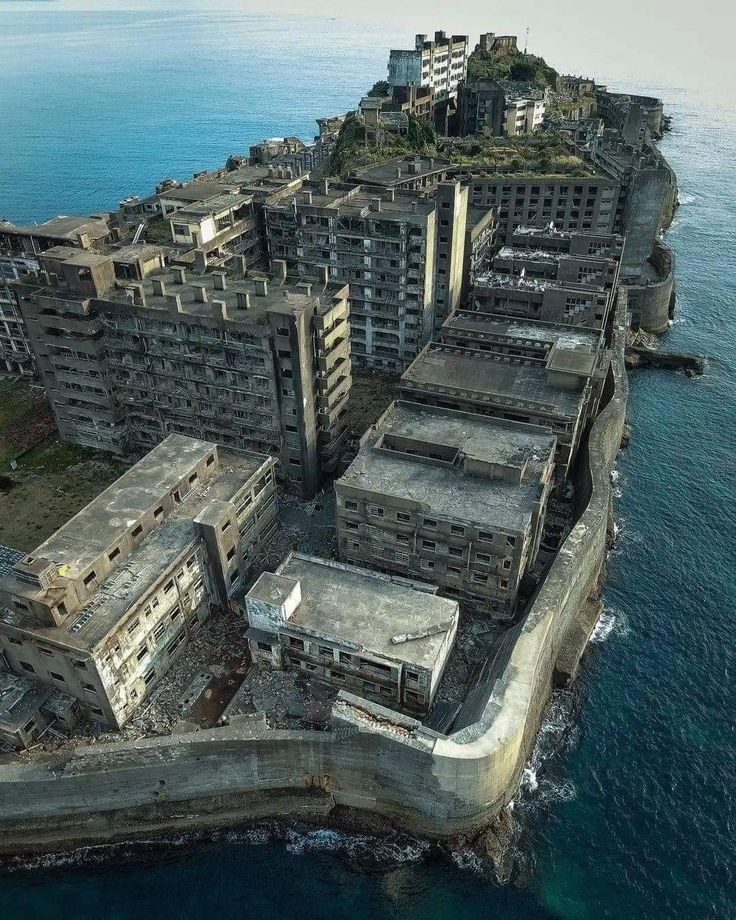
The Legend:
From a distance, Hashima Island looks like a colossal, gray battleship, earning it the nickname Gunkanjima (“Battleship Island”). Once the most densely populated place on Earth, it is now a derelict ghost town, a concrete labyrinth crumbling into the sea. The legends speak of the island being haunted by the countless souls who died there. Visitors on official tours (which only go to designated safe zones) report hearing disembodied voices in the empty apartment blocks, seeing shadowy figures in vacant windows, and feeling an oppressive sense of misery that clings to the salt-laced air.
The True Crime Documentary:
Gunkanjima’s haunting is not born of fiction, but of documented historical crime and human rights abuses. From the 1880s to 1974, the island was a highly productive undersea coal mine operated by the Mitsubishi Corporation. In its heyday, it was a thriving community with apartments, a school, and a hospital. However, this prosperity hides a dark chapter.
During World War II and the preceding Sino-Japanese War, the Japanese government’s mobilization policies led to the use of forced labor. An estimated 500 Korean and 200 Chinese civilians and prisoners of war were forced to work in the mines on Gunkanjima under hellish conditions. This is the island’s central crime. According to records and survivor testimonies, these men were subjected to brutal treatment, malnourishment, and extreme danger. The mines were thousands of feet deep, hot, and poorly ventilated. Accidents were common.
Official records state that over 120 of the forced laborers died on the island from exhaustion, disease, or mining accidents. Survivors tell stories of desperate escape attempts, with many drowning in the treacherous currents while trying to swim to the mainland. The “ghosts” of Gunkanjima are not random spirits; they are the victims of a state-sanctioned system of exploitation and slavery. Their suffering is woven into the very concrete of the island. When people report a sense of overwhelming misery, they are feeling the historical residue of this immense human tragedy.
In 2015, the island was granted UNESCO World Heritage status, a move that sparked international controversy, as South Korea and China argued that the site’s dark history of forced labor was being deliberately downplayed by Japan.
The Warning: Why You Must Not Go
While parts of Gunkanjima are accessible via highly restricted, official tours, the allure of the “haunted” derelict areas is strong for urban explorers. This is incredibly dangerous. The structures are unstable and could collapse at any moment. But the greater reason to reconsider is one of reverence. The island is a mass grave and a monument to human suffering. To treat it as a spooky playground is to trivialize the real pain and death that occurred there. The voices people claim to hear are not just ghosts; they are the unheard pleas of men who were stripped of their freedom and worked to death. Gunkanjima should be approached as a historical site of conscience, a place for somber reflection on the horrors of war and forced labor, not as a destination for a paranormal thrill ride.
4. Sunshine 60: The Skyscraper Built on a Prison for the Damned
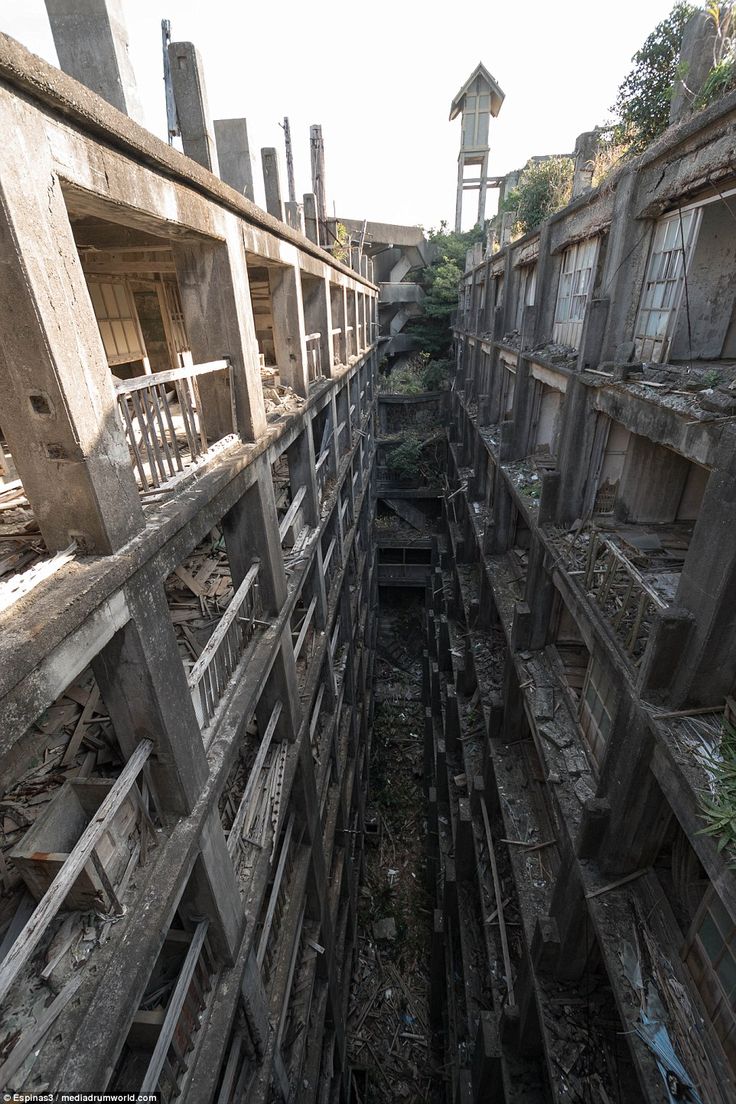
The Legend:
Standing tall in Tokyo’s Ikebukuro district, Sunshine 60 is a modern marvel of commerce and entertainment. It features corporate offices, restaurants, an aquarium, and a panoramic observation deck. Yet, for decades, rumors have circulated about strange occurrences within the building. Security guards report phantom footsteps, office workers feel sudden, inexplicable chills, and there are tales of ghostly apparitions seen late at night. Some claim that at night, you can sometimes see shadowy figures falling past the windows.
The True Crime Documentary:
The foundation of Sunshine 60 is built upon one of the darkest sites in Japan’s post-war history. Before this gleaming skyscraper was erected, this land was the location of the infamous Sugamo Prison.
Sugamo Prison was originally built in the 1920s but became notorious after World War II when it was used by the Allied occupation forces to house suspected Japanese war criminals. It was the site of the International Military Tribunal for the Far East, the “Tokyo Trials.” The most high-profile Class-A war criminals, men responsible for some of the worst atrocities of the war, were imprisoned here.
The true-crime connection is undeniable and deeply chilling. On December 23, 1948, seven of these men—including wartime Prime Minister Hideki Tojo—were executed by hanging within the prison grounds. Their bodies were cremated, and their ashes were scattered over the Pacific Ocean to prevent their graves from becoming nationalist shrines. Several other convicted war criminals also died within the prison’s walls.
In 1971, the prison was closed, and the land was sold. By 1978, the 60-story Sunshine 60 building stood in its place, an emblem of Japan’s post-war economic miracle built literally on top of a site of execution and immense historical darkness. The legends of hauntings are directly tied to this history. The phantom figures, the oppressive atmosphere—it is believed by many that these are the restless spirits of the executed war criminals, forever tied to the land where they met their end.
The Warning: Why You Must Not Go (with a different perspective)
Unlike the other locations, Sunshine 60 is a public, commercial space you can easily visit. The warning here is not about physical danger or disrespect to victims in the same way. It is a warning of awareness. When you ride the high-speed elevator to the observation deck to enjoy the stunning view of Tokyo, understand that you are standing on ground consecrated by death and judgment. The true horror is the chilling juxtaposition of a cheerful, modern entertainment complex with the profound historical weight of the land it occupies. It serves as a stark reminder that the past is never truly gone; it is simply paved over. Visiting Sunshine 60 without this knowledge is to be oblivious. Visiting with this knowledge is a deeply unsettling experience, a true-crime lesson in how history’s ghosts can haunt the most modern of places.
